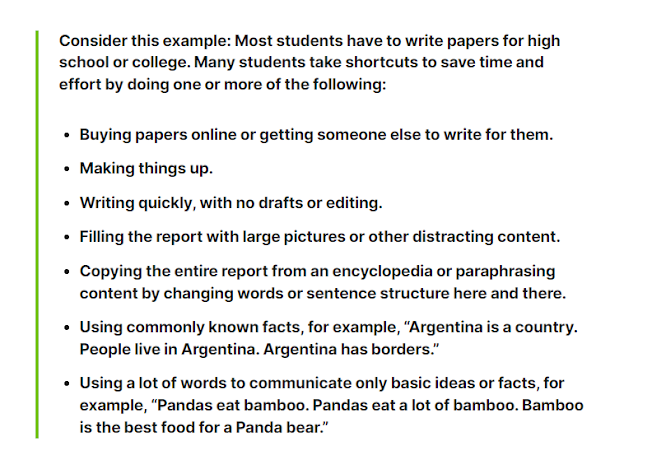A Complete Guide to Google Panda Update: 2011-21
Find out everything you need to know about Google Panda.
Find out why it was launched, what we know about the algorithm, and a complete
timeline.
Google Panda was first launched in February 2011 as part of
Google's quest to eliminate black hat SEO tactics and web spam.
At that time, there were many complaints from users about
the growing influence of "content farms".
Then came the Panda algorithm to assign a quality rating to
pages, used internally and modeled on human quality rating, which was included
as a ranking factor. Fast forward to 2021 and now you can see how important it
was to focus on quality and user experience as Google's first step.
Here's everything you need to know about Google Panda - more
on why it started, what you need to know about the algorithm, and a full
timeline.
Why Google created Panda
In 2010, the declining quality of Google search results and
the rise of the content farm business model became recurring topics.
As Google's Amit Singhal later told Wired at TED, the late
2009 "Caffeine" update that dramatically sped up Google's ability to
index content quickly also introduced "not-so-good content" into his
index.
Google's Matt Cutts told Wired that this new content issue isn't really a spam problem, but one of "what's the bare minimum I can do that isn't spamming?"
In January 2011, Business Insider ran a headline that says
it all: Google's search algorithm has been ruined, time to get back to
curating.
Undoubtedly, headlines like this had a major impact on
Google, which responded by developing the Panda algorithm.
Google Panda update is launched
Panda was first introduced on February 23, 2011.
On February 24, Google published a blog post about the
update, claiming that it has rolled out "a major algorithmic improvement
in our rankings, a change that has a major impact on 11.8% of our
searches."
The explicit purpose of the update was as follows:
Search Engine Land founder Danny Sullivan originally called
it the "Farmer" update. However, Google later revealed that it was
internally called "Panda," the name of the engineer who came up with
the main twist of the algorithm.
SearchMetrics and SISTRIX (among others) analysis of the
"winners and losers" showed that the most affected sites were fairly
well known to anyone in the SEO industry at the time.
These sites include wisegeek.com, ezinearticles.com,
suite101.com, hubpages.com, buzzle.com, articlebase.com, and so on.
In particular, the eHow and wikiHow content farms worked
better after the update. Subsequent updates would also hurt these more "acceptable"
content farms, with Demand Media losing $6.4 million in the fourth quarter of
2012.
The most obvious change in the SEO industry has been how
badly it has been affected by “article marketing,” where SEO practitioners have
posted low-quality articles on sites like ezinearticles.com as a form of link
building.
It was also clear that the most-visited websites had less
attractive designs, more intrusive advertising, inflated word counts, low
editorial standards, repetitive wording, faculty searches, and generally did not
seem helpful or trustworthy...
What we know about the Panda algorithm
When Google discussed the development of the algorithm with
Wired, Singhal said they started sending test materials to human quality raters
who were asked questions such as, "Do you want to give your credit to this
site?" Would you like to give your children medication prescribed by this
site?
Cutts said the engineer "developed a rigorous set of
questions, all open-ended. "Do you consider this page authoritative? Would
it be okay if it was in a magazine? excessive advertisements?"
According to the interview, they then developed the
algorithm by comparing different ranking signals with the human grade rankings.
Singhal described it as finding a plan in hyperspace that separates the good
from the bad.
Singhal then posted the following 23 questions as the
guiding questions on which the algorithm was based:
1. Would you trust the information in this article?
2. Is this article written by an expert or enthusiast who
knows the subject well, or is it more superficial in nature?
3. Does the site contain duplicate, overlapping, or
redundant articles on the same or similar topics with slightly different
keyword variations?
4. Would you like to provide your credit card information on
this site?
5. Does this article contain any typographical, stylistic,
or factual errors? 6. Are the topics driven by the genuine interests of the
site's readers, or is the site generating content trying to guess what might
rank well in search engines?
7. Does the article contain original content or information,
an original report, original research, or original analysis?
8th. Does the page offer significant value over other pages
in search results?
9. To what extent is the content subject to quality control?
10. Does the article tell both sides of a story?
11. Is the site a recognized authority on its subject?
12. Is the content mass-produced or outsourced to a large
number of creators or spread across a large network of sites so that individual
pages or sites don't get the same attention or care?
13. Is the item well cared for or does it look sloppy or
hastily produced?
14. Would you trust the information on this site for a
health-related question? 15. Do you recognize this website as an authoritative
source if you mention it?
16. Does this article provide a complete or exhaustive
description of the subject?
17 Does this article contain in-depth analysis or
interesting information that isn't obvious?
18. Is this the type of page you want to bookmark, share
with a friend, or recommend?
19. Does this article contain an excessive amount of ads
that distract or interrupt the main content?
20. Would you expect this article in a print magazine,
encyclopedia or book?
21. Are the articles short, inconsistent, or otherwise
lacking in useful details?
22. Are the pages produced with great care and attention to
detail versus less attention to detail?
23. Would users complain if they saw pages on this site?
It's also a good idea to think about what Google's human
quality assessors have had to consider. This quote about low-quality content is
significant:
In March 2011, SEO By The Sea identified Biswanath Panda as
the likely engineer behind the algorithm of the same name.
In one article, Biswanath helped the author explain how machine
learning algorithms can be used to create accurate classifications of user
behavior on landing pages.
Panda and Google E-A-T:
In 2014, Google introduced the E-A-T principles in its
search quality guidelines, focusing on competence, authority, and
trustworthiness.
Since 2018, these principles have become increasingly the
focus of marketers' attention.
Like Panda, consistent updates and key algorithmic changes
focus on content quality and user experience.
And like Panda, the goal is to avoid:
• Subtle and non-informative content.
• Lack of authoritative sources.
• Unreliable Content and
Questionable Links.
Google Panda Recovery
The path to recovery for pandas can be both easy and
difficult.
Because Panda improves website performance with content it considers
high quality, the solution is to increase the quality and uniqueness of your
content.
Although this is easier said than done, it has been proven
time and time again that this is exactly what is needed for recovery.
Alan Bleiweiss helped a website recover by helping it
rewrite content for 100 pages.
WiredSEO helped a site recover from Panda by changing its
user-generated content policy to encourage more specific and unique bios,
rather than those copied from other sites. The site users had previously used
the bios from their other sites. However, WiredSEO encouraged them to change
the bio to ask specific questions, resulting in unique biographies that weren't
duplicated.
The Google Panda Myth
Pandas is not about duplicate content
The most common myth about Panda is that it's about
repetitive content. John Miller clarified that the duplicate content has
nothing to do with Panda. Googlers emphasize that Panda encourages unique
content, but it goes beyond avoiding repetition. Panda looks for truly unique
information that provides unique value to users. Mueller also told a blogger
that eliminating technical duplication is actually a very low priority and that
they need to "consider what makes your site different from the absolute
best sites in your niche."
In 2021, Google CEO John Miller explained that duplicate
content is not a negative ranking factor.
Content created by Pandas and users
Panda is not particularly focused on user-generated content.
While Panda can target user-generated content, it tends to affect sites that
produce low-quality content, such as spammy guest posts or spam-filled forums.
Don't delete your user-generated content, whether it's forums, blog comments,
or article contributions, just because you hear it's "bad" or advertised
as a "panda-safe" solution. Rather, look at it from a quality
perspective. Many top-ranking sites rely on user-generated content – many
lose a lot of traffic and rankings simply by removing such content. Even a
comment on a blog post can get it ranked and even included.
Word count is not a factor
Word count is another aspect of Panda that is often
misunderstood by SEOs. Many websites make the mistake of refusing to publish
any content unless it exceeds a certain word count, often 250 and 350 words.
Instead, Google recommends that you consider how many words your content needs
to be successful with users.
For example, there are many pages with little body content
that Google considers high enough quality to get a featured snippet for a
query. In one case, the main content was only 63 words, and many people
struggled to write about the topic in 350+ words without spamming. So you need
enough words to answer the query. Affiliate links and advertisements are not
directly targeted
Affiliate and Made for AdSense sites are generally more
vulnerable to Panda than others, but not because they are specifically
targeted. A Google spokesperson told TheSEMPost









.jpg)



0 Comments